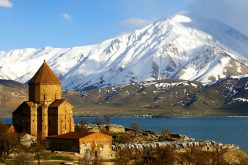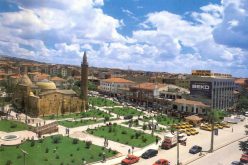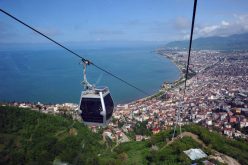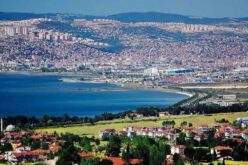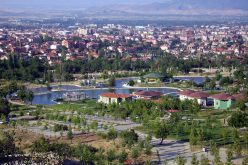Igdır

Igdır
Igdır in the Eastern Anatolia Region of Turkey, Turkey’s highest mountain, Agrı Dağı, (the Biblical Mount Ararat) is in Igıir province, but much of the land is a wide plain far below the mountain. The area’s name came from “Igdır Bey”, the oldest son of Cengiz Alp who was one of six sons of Oghuz Han belonging to internal Oghuz three arrows branch considered to be the 21st of the 24 Oghuz branches.
They spread throughout Anatolia and there are towns and villages named Igdır in Malatya and other parts of Turkey today. Historians believe that Iğdır went by the Armenian name of Tsolakert during the Middle Ages. When the Spanish traveler Ruy González de Clavijo passed through the region in the early 1400s, he noted that there was a fortress at Igdir ruled by a woman, the widow of a brigand whom Timurlane had put to death. In 1555, the town became a part of Safavid Empire and remained under Iranian rule (with brief military occupations by the Ottomans between 1578–1605, 1635–36 and 1722–46) until it fell into the hands of the Russians after the Russo-Persian War of 1826-1828. According to archeological sources, at around 4000 BC, the Hurri civilization was founded with the Hittites in the Eastern Anatolia Region. Urartu epitaphs bear testimony to the subsequent presence of Urartus in the region. Thereafter the region was under the dominance of the Sakas, Sasani, Byzantines, Seljuklians, Mongols, Oguz, Karakoyunlular and finally the Ottomans, until today. Stand in the plains and looking into the horizon, and the Agri Mountain will bring to life the legends of Noah. According to the Bible, it is believed that Noah`s Ark rested on the Mount of Ararat during the big flood, and the wide plain of Igdir at the foot of the mountain is the first place where Noah set foot after the disaster. From here, their progeny settled to the south and west along the Firat (Euphrates) and Dicle (Tigris) rivers, establishing the second beginning of the world.
Olive groves cover this historical area, and the olive branch, which, according to the legend was brought by a dove to Noah, is believed to have been taken it from this wide grove. The caravanserai of Zor, believed to have been built by an Armenian architect in the 13th or 14th century, is located 35 km south-west of the city of Iğdır, and is named after the nearby village of Zor. It was one of halting places along the trade route between northern Persia and Georgia. Caravans used to stay over-here before passing over the & cedilli pass. Restoration works have begun on the structure which has been put under protection since 1988. The ruins of an Armenian church was once located in the same area, but today nothing remains of it. Sürmeli castle, 25 km west of the city of Iğdır and on the road to Tuzluca, is the site of a medieval Armenian town. However, it is currently inaccessible due to border restrictions. Statues with Ram Heads, Cementer stones with ram heads existing almost in all old cementers in Igdır Plain are remnants from Karakoyunlu period. These cementers of brave, heroic persons and young persons who had died in youth age. Aras Bird Research and Education Center, One of only four active bird research and banding (ringing) stations in Turkey. 204 bird species have been recorded so far in the wetlands along Aras River, Yukari Ciyrikli, Tuzluca. Bird enthusiasts can volunteer or visit to experience the diverse bird life and traditional village life. From Kars to Igdir, turn immediately right 10 meter before the Aras bridge and drive 4 km to Yukari Ciyrikli village.
Write a Comment
Only registered users can comment.




